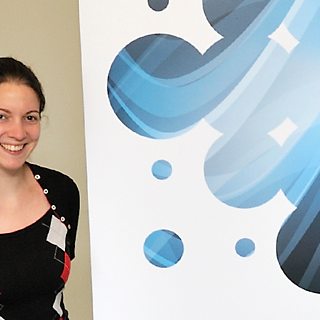High Dynamic Range increases the difference between black and white beyond the contrast range of conventional television. That means water can glisten, stars can twinkle, and sunlight can be golden, all whilst maintaining detail in the shadows. Hybrid Log-Gamma (HLG) is an HDR system that was specifically developed for television by the ±«Óãtv and Japanese broadcaster NHK.
Project from 2014 - present

What we're doing
- ±«Óãtv R&D - High Dynamic Range in Live TV Production - 2019 FA Cup Trials
- ±«Óãtv R&D - World Cup 2018 in UHD HDR on ±«Óãtv iPlayer
- ±«Óãtv R&D - How to Adjust Your TV to Enjoy the Best Picture Quality in HDR
Consumer television displays are getting brighter and capable of presenting stunning UHD images which are almost like looking through a window on to a scene. Having seen some fantastic HDR demonstrations we wanted to understand how our viewers could benefit from HDR in the future.
Broadcast television, and particularly live television, has a very complex content workflow. Our production and broadcast activities are spread over a number of sites, each at different points in their equipment replacement cycle. We started to investigate how HDR could fit into a typical broadcast infrastructure such as ours.
We concluded that any approach couldn't rely on end-to-end metadata as metadata often gets lost or becomes out-of-sync with the content as it passes through the production chain and that standard presentation techniques such as mixing video sources become overly complex with metadata. We also wanted the captured signal to be display-independent because a wide range of different displays and lighting conditions are used both in production environments and .
Finally we wanted an approach that was compatible with our current 10 bit infrastructure and only needed changes to the cameras and critical monitoring displays. This led us, and NHK who shared many of our concerns, to invent the Hybrid Log-Gamma (HLG) system for HDR.
In order to meet all of our requirements, HLG was designed to be a scene-referred system, just like conventional television. The signal represents relative light levels in the original scene, which allows pictures from a single mastering process or live production to be adapted to give the same artistic effect on brighter or darker screens at home.
Only the display itself needs information about its own capabilities and environment to faithfully render the scene-referred signal, so metadata that describes the mastering display is not required. HLG also has native compatibility with standard dynamic range (SDR) television within the same colour format, which can be used for (UHD) SDR displays.
We are working to develop a complete HDR ecosystem. This starts with fundamental research into the human visual system, which then informs development of technical systems including format conversion techniques, HDR production guidelines and adaptation requirements for displays of different brightness.
We then see these systems through to international standards that cover the whole video chain, from the , through , , and . We also support consumer electronics manufacturers in verifying their implementations and developing to the final display. HLG is included in , the international standard for high dynamic range programme production and exchange, and is royalty-free.
Why it matters
High Dynamic Range will offer a step-change in quality to viewers, making pictures more realistic and more immersive. In order for HDR programmes to be enjoyed in the home, a complete broadcast infrastructure must be in place. HLG's native compatibility allows much of the existing SDR infrastructure to be re-used for HDR.
How it works
We continue to add and link to a series of guides below, which describe the technical details of HDR and HLG in particular..
- (Dec 2016)
- Colour Volumes
- (Oct 2017)
- HLG, SDR, PQ and S-Log3 Format Conversion:
- (Apr 2020)
- (Mar 2024)
- (Apr 2020)
- (Nov 2016)
- (Jul 2019)
- (Sep 2019)
- How to Measure Displays
- (Nov 2018)
- (Apr 2017)
Outcomes
Quite simply, our audiences will be able to enjoy a brilliant home TV experience.
- -
- from the ±«Óãtv Academy including:
Project Team
Project Partners
Project updates
-

Broadcast and Connected Systems section
Broadcast & Connected Systems primarily focuses on how ±«Óãtv content reaches our viewers through broadcast and Internet delivery. This involves the whole broadcast chain from playout, through coding and distribution to consumption on the end-user's device. Our work typically covers a period from now through to 3 years out from deployment.
-

Immersive and Interactive Content section
IIC section is a group of around 25 researchers, investigating ways of capturing and creating new kinds of audio-visual content, with a particular focus on immersion and interactivity.






